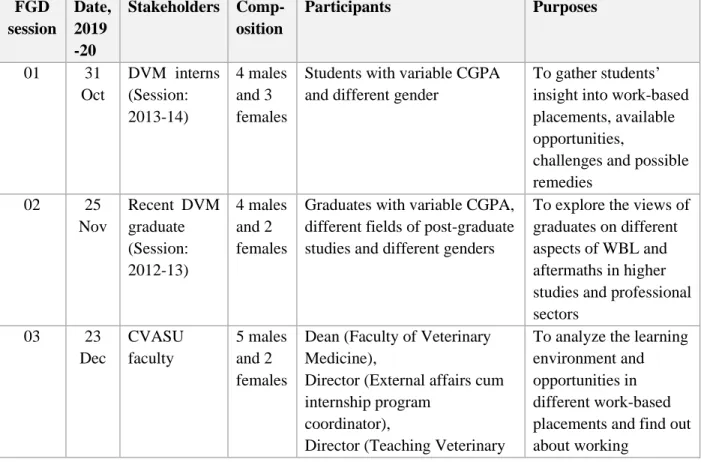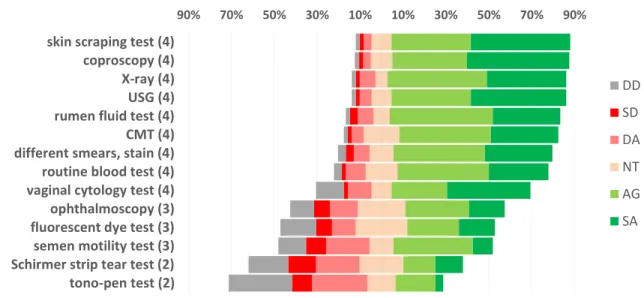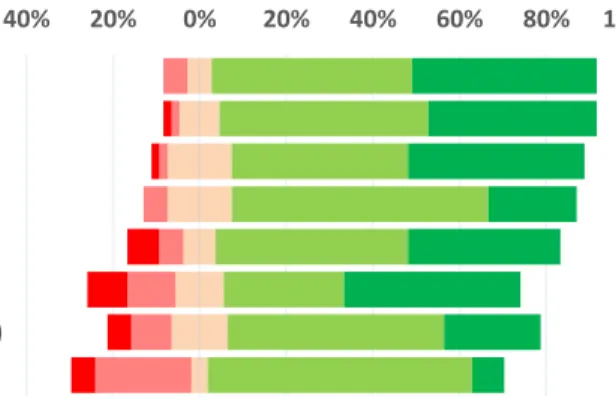Head of Department, Department of Medicine and Surgery, Chattogram Veterinary and Animal Sciences University. What were the most useful parts of the practice in preparing students for work?
Concept of work-based learning; purposes and objectives
This chapter includes a review of the literature on WBL and is organized into a series of sections describing the purpose and objectives of WBL, the global and national history, the evolution of veterinary WBL and its current status in different parts of the world including Bangladesh. . Additionally, the curriculum, operation and evaluation of the WBL program at Chattogram Veterinary and Animal Science University (CVASU) are described along with potential benefits and challenges for key stakeholders.
Global history of work-based learning
Since there are many benefits to be gained from WBL, universities and academic institutions around the world have incorporated more workplaces into the curriculum. Five basic purposes for WBL have been identified: i) acquisition of employment-related knowledge or skills, ii) real-world occupational exposure, iii) provision of career exploration and planning, iv) acquisition of personal and social competencies, and v) increase student motivation and academic achievement (Katherin et al., 1999).
History of work-based learning in the veterinary curriculum
- Europe
- North America
- Australasia
- Africa
- Asia
The College of Veterinary Medicine, Western University of Health Sciences, USA provides WBL opportunities through a Veterinary Ambulatory Community Service (VACS) and externships off campus, private and corporate veterinary practices, educational and research institutions, laboratories and organizations (e.g. as in a zoo) (Fuentealba et al., 2008, Hedge et al., 2018). The Faculty of Veterinary Science at the University of Pretoria arranges both core and elective placements for final year students.
Veterinary work-based learning in Bangladesh
Curriculum, operation, and evaluation of the Work-Based Learning programme at
The production rotation consists of placements at Government and Private Dairy Farms, Poultry Farms, Breeder Farms and Remount Veterinary and Farm Corps (Military Dairy Farms) of the Bangladesh Army. They should list all completed tasks with the postings as well as any tasks not undertaken.
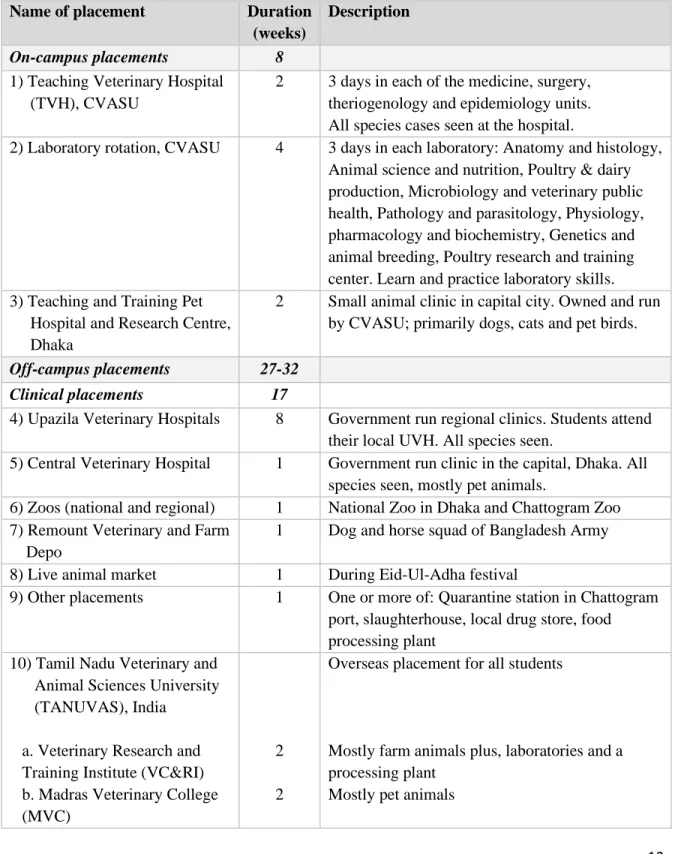
Analytical comparisons of work-based learning between overseas and
Fourteen internship providers grade the students (A-D) based on their attendance, the list of activities they completed and their overall performance, as well as posting comments on their progress in the logbook. In addition to being checked by the internship coordinator, the logbook is assessed by each member of the examination committee (Hoque and Anwer, 2018). During the internship program, students are also required to write two scientific reports (clinical and productive) and CVASU provides structured guidelines for preparing and assessing the reports.
Benefits of work-based learning
Benefits for students
Bangladeshi students are also fortunate enough to undertake rotations at RV & FC (Dairy Farm, Bangladesh Army) and RV & F Depot (Dog and Horse Squad, Bangladesh Army). Working with other professions can expand veterinary students' knowledge of One Health through, for example, integrative community learning and collaboration with public health experts (Tyner et al., 2014).
Benefits for faculty or University
Benefits for placement providers
Challenges of work-based learning
Significance of the present study
It will then identify ways to optimize and maximize benefits while managing the various challenges in implementing WBL as part of a veterinary program.
Summary
Survey design
Description of the questionnaire
Section-2: Opportunities to directly observe, assist and treat food and pet clinical cases in various work-based locations, availability of sufficient clinical cases. Key skills learned, missing and desired skills, the best aspects of work-based placements and the job offer from the employment provider.
Administration of survey questionnaire
Focus group discussion
- Focus group discussion participants
- Focus group discussion guide
- Operational procedure of focus group discussion
- Transcription of focus group discussion
A discussion guide with six primary sections was prepared according to the results of the previous study. The questions in the guide were common to each session, with the exception of the stakeholder-specific questions, which were asked based on the stakeholders' career stage, position and experience (e.g. benefits and challenges for each stakeholder group, opportunities for job opportunities for students in different sectors).
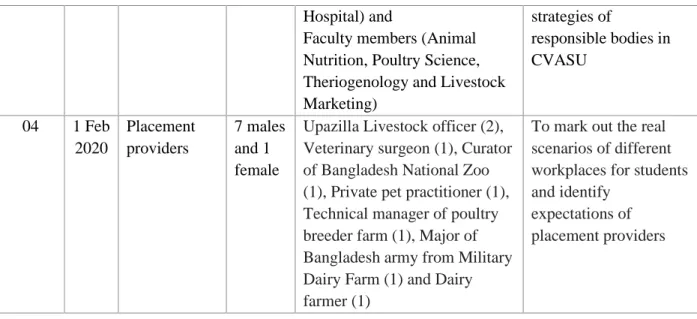
Data entry and evaluation
Survey data
Using both the recorded audio and the notebook notes, entire conversations from the discussion sessions were transcribed and translated from Bengali to English by a third person who was not present at the FGD session.
Focus Group Discussion data
Ethical consideration
RESULTS
Survey participant demography
- Students’ opportunities for pet and farm animal practice
- Students’ opportunities for different laboratory work and post-mortem
- Students’ opportunities for prescription writing, certificate writing, ration and diet
- Students’ opportunities to undertake extension activities
- Structure and elements of work-based learning programme
- Placements and placement providers
- Additional questions
The majority of students (more than 80%) agreed or strongly agreed that there were sufficient opportunities to perform basic clinical skills in farm and domestic animals, including taking temperature, heart rate, pulse rate, auscultation, assessing hydration status, palpation and diagnosis of pregnancy and administration of drugs by different routes (subcutaneous, intravenous and intramuscular injections). Although 61% of students had the opportunity to perform local anesthesia on farm animals, less than half of them agreed or strongly agreed that they had sufficient opportunity to perform local anesthesia (46%) and general anesthesia (43 %) in domestic animals. While, a smaller part agreed that there were opportunities to perform the fluorescent staining test (41%), the sperm motility test (46%), the Schirmer tear test (28%) and the Tono-pen test (22%). ).
However, there were limited opportunities for postmortem farm animals (9% agree or strongly agree), pets (17% agree or strongly agree) and wild animals (17% agree or strongly agree). Students were mostly satisfied with the opportunities to write a draft prescription for farm animals, poultry and pets (respectively 80%, 89% and 78% agreed or strongly agreed) (Figure 4.4). In response, most agreed or strongly agreed that they have sufficient opportunities to plan and successfully implement a program for vaccination (89%), deworming (78%), farmer training (72%) and school children (91%). to feed.
Just over half of the students agreed or strongly agreed (55%) that CVASU should provide monetary incentives for internships, and some noted in the free text comments that other institutions did, whereas the rest of the participants showed a neutral attitude (17 %). disagree (13%) or strongly disagree (15%).
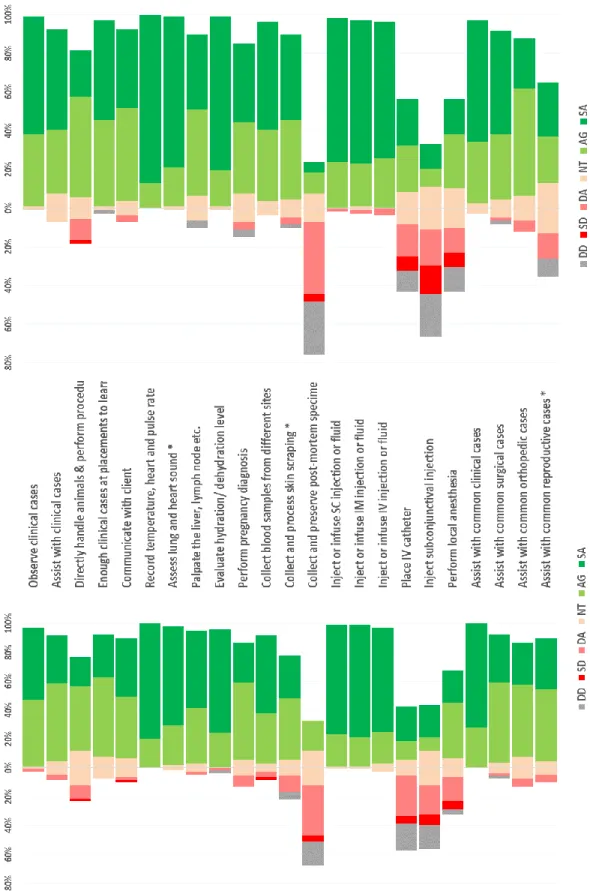
Focus Group discussion
- What are the main benefits/advantages of work-based placements / internship
- What currently enables or prevents the students to get sufficient opportunities to
- What do you think are the main reasons for students not getting sufficient
- Stakeholder specific questions (Teachers)
- What are the main benefits and challenges of the internships for CVASU (and
- What should be changed in the internship programme to make it better for
- What CVASU should do in its teaching and learning approaches to better
- Stakeholder specific questions (Placement providers)
- What are the main benefits and challenges of the internships for placement
- What changes in the internship programme could make it better for placement
In addition, some students and graduates have proposed extending the duration of the internship at UVH. In the survey, 69% of students indicated that travel and accommodation were major challenges during WBL. With the exception of one of the internship providers, all participants in all four focus groups agreed unequivocally that internship providers should not receive financial incentives.
All focus groups emphasized the urgent need to strengthen the relationship between the university and practitioners. What are the main advantages and challenges of the internship for CVASU (and its students). All teachers emphasized that proper monitoring of student activities would improve the internship program for both internship providers and students.
One of the placement providers drew everyone's attention to the benefits of introducing an elective placement.
DISCUSSION
Working opportunities for students and obstacles
In the current study, all students were exposed to a relatively large number of pets compared to domestic animals while working abroad (MVC of TANUVAS), which was undoubtedly reflected in the overall results. On the other hand, just as students rarely had the opportunity to perform postmortems on farm animals, pets and wild animals at university, they were also deprived of the opportunity to practice off-campus while studying WBL. In addition, due to the controlled access of outsiders to most of the laboratories, students could not participate properly in the laboratory work.
It is very important to train students in ophthalmology with the proper use and application of the equipment available at TVH. It is also noticeable that most of the students did not have the opportunity to write a draft certificate on the health status, death and incurability of the animal. One of the most important things this study found was that the faculty informs the placement providers in detail about the student's abilities before sending the students to work placements.
Millington (2013) also referred that the supervision of placement providers should be based on the level of competencies of the students and it is important to inform them with the necessary guidance.
Structure and elements of work-based learning
- Placements
- Duration and time frame
- Faculty – placement collaboration
- Faculty-student coordination
In addition to being made aware of the various updated diagnostic and treatment strategies in the veterinary field, students are able to gain a thorough understanding of the use and application of various laboratory equipment in TANUVAS. In highly advanced veterinary hospitals at TANUVAS, KKU and UPM, students had the opportunity to learn and practice some of the diagnostic and medical procedures that were not easily accessible in the Bangladeshi context. The dairy farm rotation is considered one of the most important placements for WBL.
One of the most obvious findings that emerges from the analysis of the survey and FGD results is that there was a conducive and conducive learning environment for students in most workplaces during WBL. Charles (2018) noted that one of the hallmarks of a good placement is the opportunity for discussion between students and placement providers about clinical cases in the hospital. Therefore, it is the faculty's responsibility to strengthen the relationship with them and arrange appropriate compensation for their time and effort.
This is an excellent opportunity for students to portray the general activities throughout the WBL period in front of DVM students of other institutes, faculties and veterinary professionals of the country.
Challenges
- Challenges for students
- Challenges for the faculty
- Challenges for the placement providers
Although busy schedule of placement providers is the most important reason behind inadequate cooperation for. Various constraints, lack of confidence in students' skills and competencies and several other circumstantial factors also limited opportunities. Notable among them are preparing students and arranging accommodation, managing placements and meeting the expectations of employment providers, and the lack of manpower in the coordination team.
On the other hand, faculty rarely contact placement providers to inquire about students' overall progress and performance in most placements. There is almost no formal approach to obtaining feedback from practice providers as part of monitoring the WBL programme. Completing my fifth year of internship has increased my level of confidence in dealing with clinical cases of production animals in the field.
Completing the fifth year externship increased my confidence level in handling clinical cases of pets. I feel more prepared to work in a clinical setting with pets as a result of my fifth year externship. Completion of the fifth year externship increased the level of confidence in handling clinical cases of pets.
